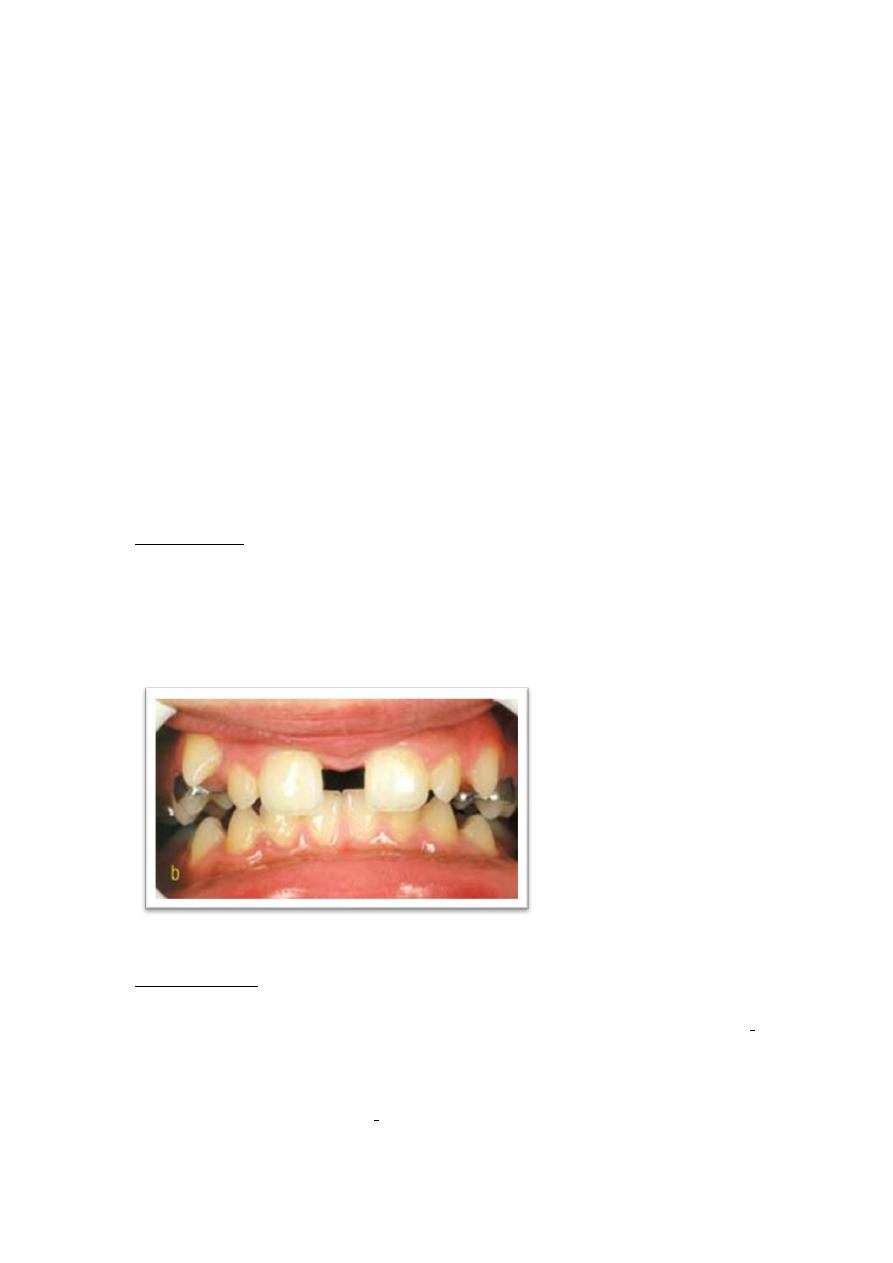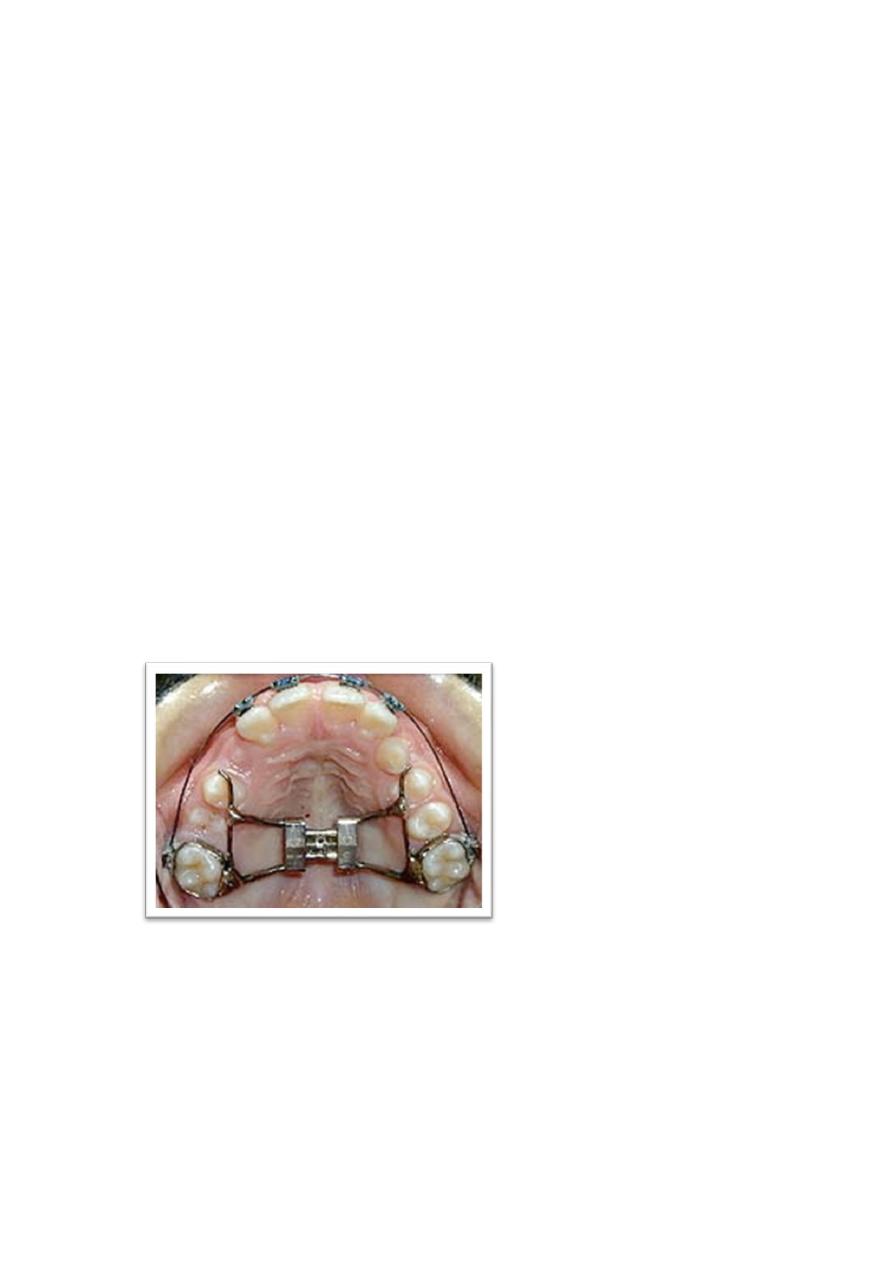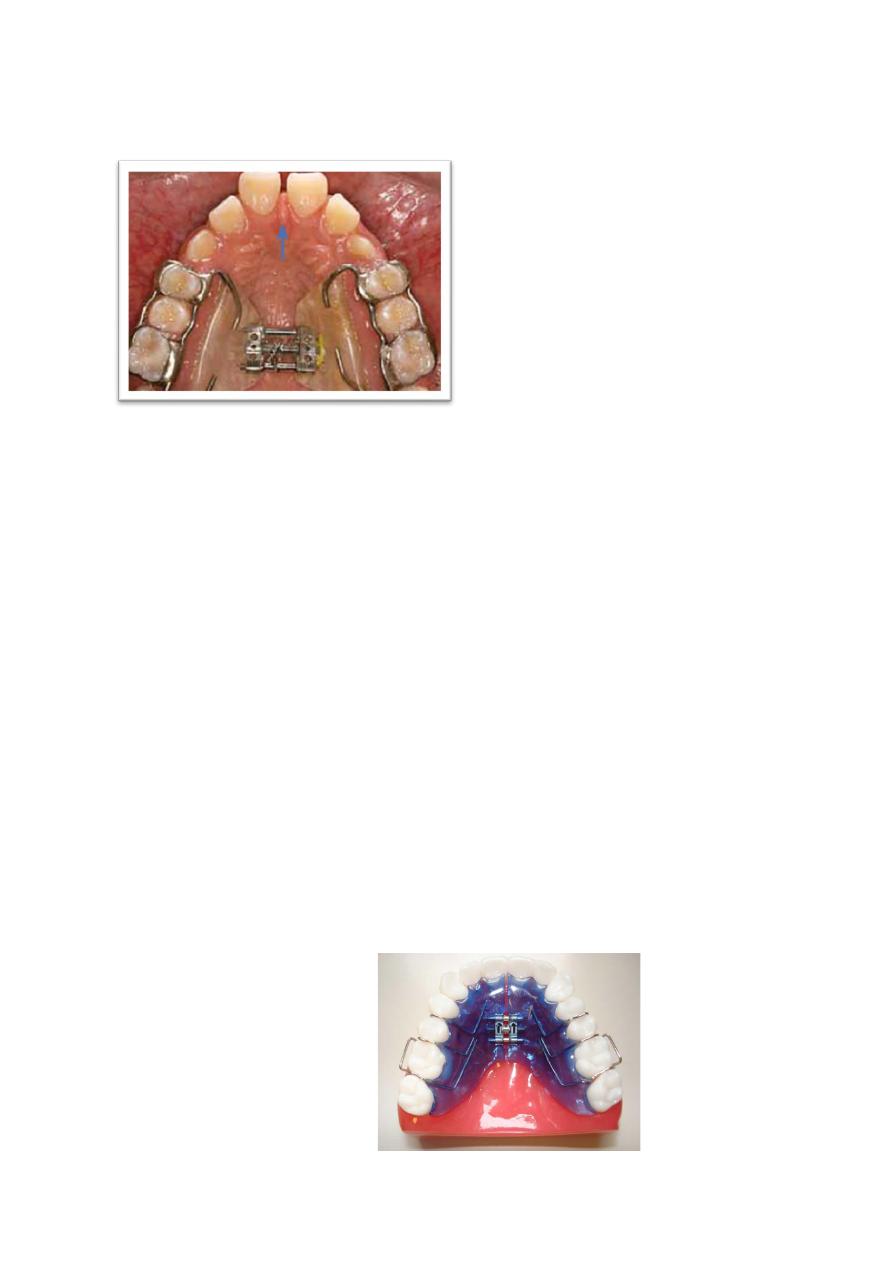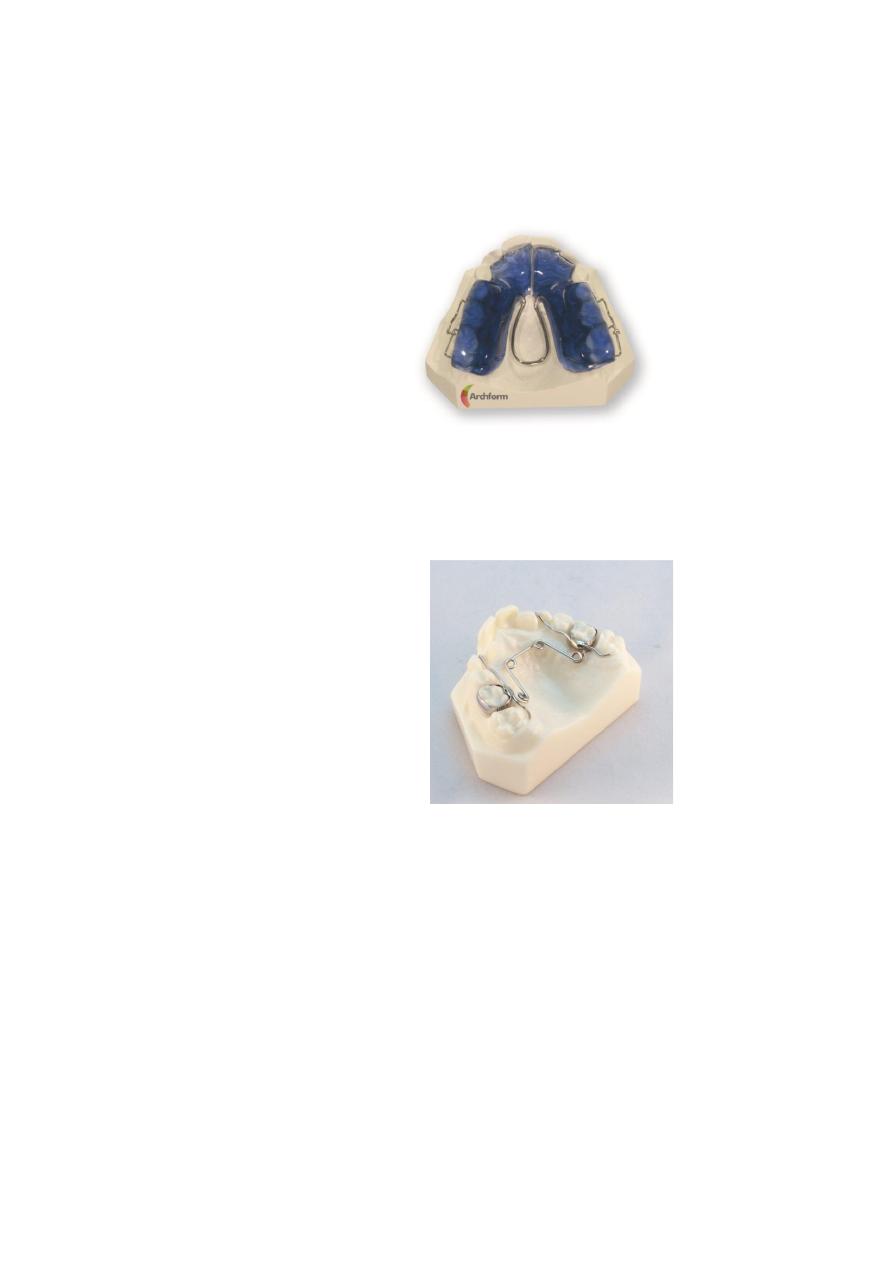
1
ARCH EXPANSION
The expansion of the arch has been one of the oldest means of creating
space the dental arches. Based on the duration of time taken to achieve the
desired expansion, expansion devices can be classified as:
• Rapid maxillary expansion devices.
• Slow expansion devices.
Rapid maxillary expansion devices(RME)
The first reported use of a rapid expansion device, dates back to the year
1860. The RME appliance is essentially a dentofacial orthopedic appliance,
which tends to produce its changes by splitting the mid-palatine suture. The
rationale being that if extreme forces are applied on to the palatal shelves, the
interlying suture splits and results in true skeletal changes. The teeth are
generally used for the purpose of transmitting the forces onto the maxillary
bone proper.
EFFECTS OF THE RME
Dental effects
1. Posterior teeth tend to tip buccally.
2. Limited extrusion of posterior teeth.
3. There is distinct appearance of midline diastema which appears within days
of initiating RME therapy. The diastema is reported to close simultaneously
within 6 months due to the trans-septal fiber traction.
Appearance of midline diastema
Skeletal Effects
1. The palatine processes separate in a triangular or wedge-shaped manner.
2. The mandible rotates downward and backwards due to the downward
movement of the maxillary posterior teeth.
3. The RME tends to increase the intranasal space as the outer walls of the
nasal cavity move apart.

2
Indications for RME use
RME appliances are ideally indicated in growing individuals with severely
constricted maxillary arches, involving airway impairment or mouth breathing
tendencies. They are also indicated in other cases of:
1.
.
Posterior cross bites with real or relative maxillary deficiency
2. Cleft patients
3. Along with facemask therapy
4. Class III cases with minor maxillary deficiency
5. As part of interceptive orthodontics
Types of rapid maxillary expansion appliances
They can be best classified as
:
1. Removable appliances
2. Fixed appliances
- Tooth-borne
- Tooth and tissue-borne.
1.Removable appliances
The efficiency of removable RME appliances is doubtful. The appliance
basically consists of a screw in the midline with retentive claps on the posterior
teeth. The acrylic plate is split in the middle and activations of the screw forces
the two halves apart to result in the desired expansion.
2. Fixed appliances
- Tooth-borne : best examples are The Isaacson type or the Hyrax type.
Hyrax type

3
- Tooth and tissue-borne: example,
Hass RME Appliance
which transmits forces
not on to the teeth only but also on to the palatal shelves directly.
Hass RME Appliance
Activation of the RME appliance
The basic principle of the appliance involves the generation of forces
that are capable of splitting the mid-palatine suture. Hence, the forces should be
definitely more than the usually used orthodontic forces. The forces generated
are close to 10 to 20 pounds. An expansion of 0.2 to 0.5 mm should be
achieved per day. The screw is activated at between 0.5 to 1mm per day and
about 1 cm of expansion can be expected in 2 to 3 weeks.
Slow expansion devices
Slow expansion involves the use of relatively lesser forces (2 to 4
pounds) over longer periods (2 to 6 months) to achieve the desired results.
Indications of slow expansion
1. Correction of unilateral cross bites.
2. Correction of 'V' shaped arches as in "thumb-sucking child
3. Preparation for bone grafts in cleft cases.
4. Minimal crowding in the upper arch (1-2 mm).
5. Elimination of a displacement
Appliances used for slow expansion
1. Screw Appliances: Various screws have been used for the expansion of
maxillary and the mandibular arches . These screws have a smaller pitch
and are activated less frequently as compared to screws used for RME
appliances.

4
2. Coffin Spring: This appliance is capable of producing slow expansion,
even though it has been shown to split the palate especially when used in
patients in the early mixed dentition. It is an ideal appliance to treat
unilateral cross bites
.
3. Quad/Tri/ Bi-Helix: They are all named after the number of helices
incorporated in the appliance. The quad helix consists of four helices made
of 0.038" diameter wire, soldered to the molar bands. The increased length
of wire increases the range of action and flexibility, and decreases the
force levels. The tri- and the bi-helix appliances incorporate only three and
two helices respectively.
